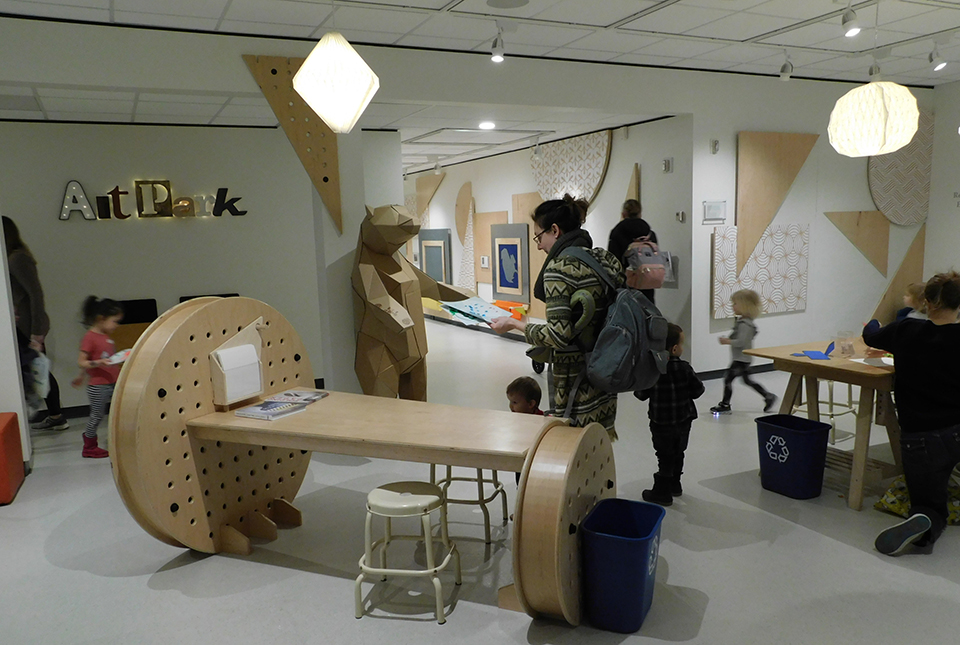Ah, late February. Although a recent empty-nester, I remember well a parent’s need to stockpile cabin-fever-busting ideas for family outings. A few go-to options for fun things to do at home come in handy, too, if snowy weather requires hunkering down indoors.
The Woodson Art Museum has you covered on both fronts.
Art Park – the Museum’s interactive family gallery in the lower level – is infused with origami themes for a few more days, while the three origami exhibitions remain on view, through Sunday, March 1. Drop in – always admission free – to try your hand at folding origami forms, with guidance from demonstration videos that loop continuously on screens in Art Park.
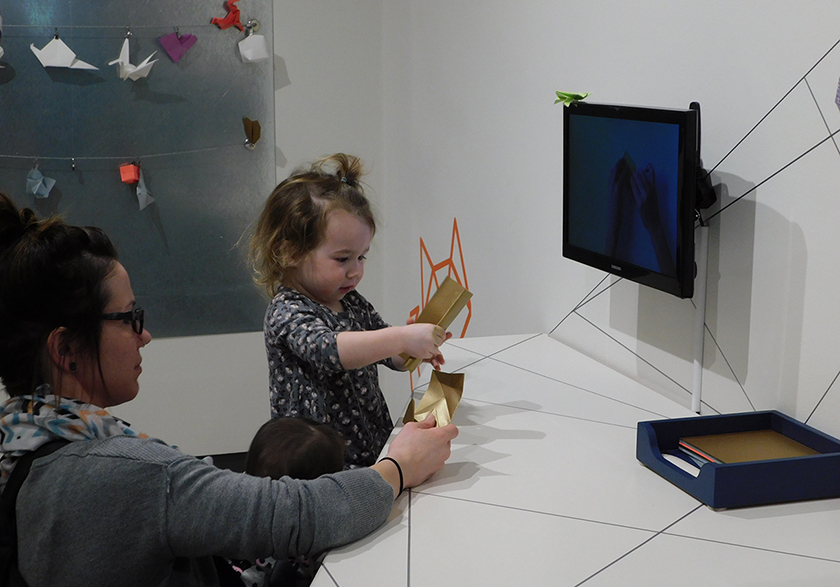
Here’s a parental-sanity preserving tip for any snow days ahead: use your phone to record a video of the on-screen how-to, for a quick refresher when folding paper at home.
Master origami artist Robert J. Lang, who led programs during his recent residency, has tips for parents, too.
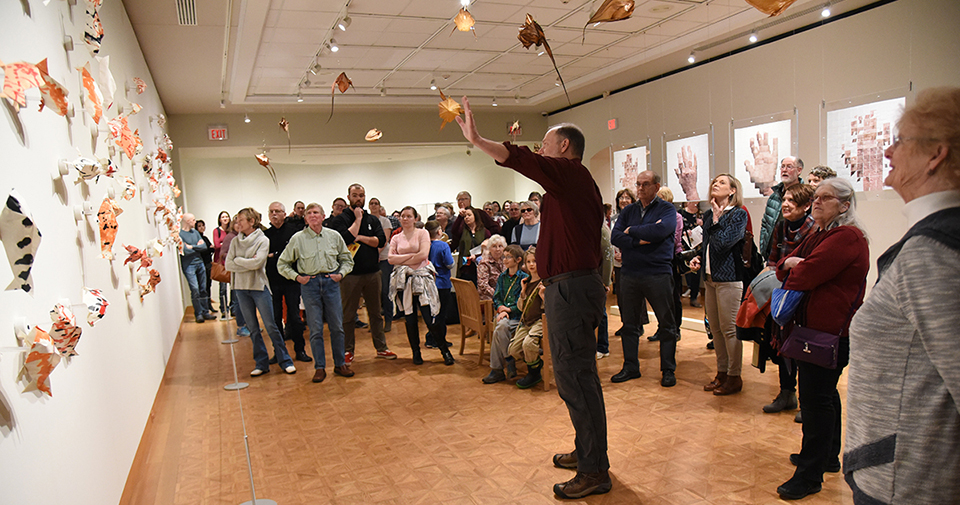
Lang, a laser physicist-turned artist, developed some of the most complex origami designs ever created, and his artwork is in all three origami exhibitions on view for just five more days. No matter your child’s interests, origami has the power to inspire and may even provide many career possibilities.
From the design of heart stents and car air bags to space telescopes, origami principles can offer solutions for anything that needs to fold compactly for deployment before unfolding for use. Origami applications extend into architecture – think foldable living structures for people without homes – fashion, packaging, and – of course – art.
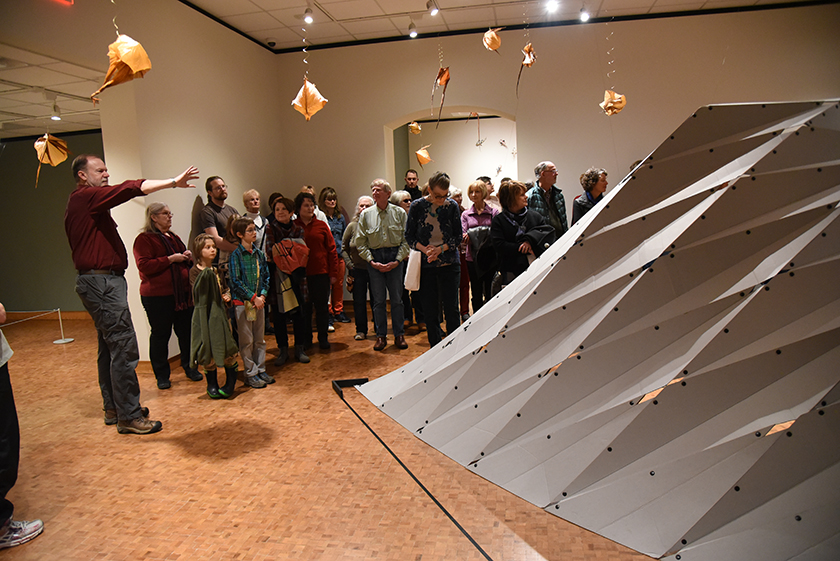
Nurturing, encouraging, and broadening your child’s interests is a parent’s priority. Offering career guidance, though, can be a daunting challenge because who knows how career options will evolve?
“There is one general piece of advice I can give,” Lang wrote in a “Careers in Origami” article on his website, langorigami.com, “which is to follow Pasteur’s advice: ‘chance favors the prepared mind.’ If you learn a lot about many fields that might be applicable, you will be better prepared to go into the one that actually turns out to be applicable – and even better, you’ll be prepared to follow the new interdisciplinary field that never existed before. Most of the innovation in life happens on the edges, between the defined boundaries of existing fields. A flexible outlook and broad background give you a leg up in pursuing those new fields. This is, of course, a principle with applicability outside the world of professional origami. But it’s especially relevant to the fast-changing world of origami.”
Lang worked with area educators and students during his Woodson Art Museum residency, conveying ways that origami intersects with STEAM learning – science, technology, engineering, ART, and math.
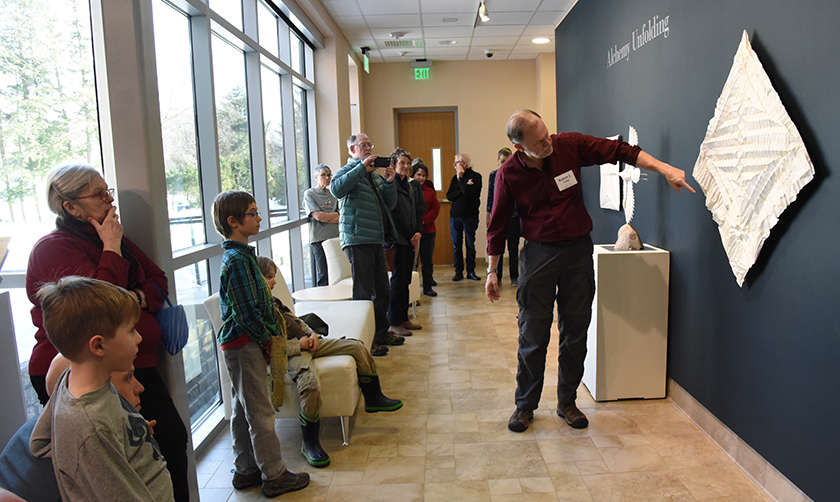
“Science, via geometry and tessellation, has brought origami into the modern age,” Lang wrote in an “Engineering & Science” magazine article in 1989. “We may ask, what can origami bring to science? . . . The architects of technical folding have begun to lay the groundwork for systematic design. To our great surprise, origami, the ancient Eastern art, may be a science after all.” Astonishing cross-fertilization of ideas between match, origami, and computer science during the intervening three decades, Lang said, also prompted an explosion of advances in origami design.
Learn more and find great resources, too, for the inevitable, inclement-weather days ahead on Lang’s website, which offers published instructions and crease patterns. For additional snowy and rainy day ideas, download and print the Woodson Art Museum’s origami Activity Guide.
Visit soon to experience a flair for France and delightful children’s book illustrations in upcoming exhibitions. Colorful French posters and illustrations by award-winning author and artist Melissa Sweet will grace the galleries, beginning March 7, and will offer spring-fever remedies galore.
